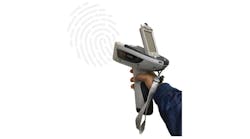One of the many responsibilities of operators is specifying equipment for their applications. More manufacturers entering the market can make this a complicated task with extensive amounts of information to sort through.
This article examines some of the important factors to consider when choosing a fluid sampler, but generally the procedures could be applied to any piece of equipment. Although these steps look simple and obvious, they are often neglected.
Steps in choosing a sampler
There are several steps in choosing a sampler to ensure that you end up with a sampler well suited to your application.
First, define what you want to accomplish in the application. Take into consideration your current needs and try to project your needs for the future. Your requirements should encompass both, if possible, but adding in requirements that aren’t necessary will make it more difficult and increase the cost of the sampler.
Second, talk with a manufacturer or manufacturer’s representative about whether their sampler can perform to your application requirements.
Be specific about the fluid and any contaminants that will be sampled; the analysis to be performed; the trigger for the sampler (external input, analog or serial, etc.); the sample storage (i.e. refrigerated); the positioning (proximity to a power source, etc.); and environmental conditions affecting the sampler (may require the use of an optional enclosure for protection from the elements) and the sample source conditions (i.e. aeration, temperature).
Third, understand how to install and use the sampler correctly in your application. Asking questions about installation before the purchase can save many headaches and last-minute problems during an installation.
A sampler can be used for almost any liquid process. Some of the key points in defining your application are listed at left.
Working with a manufacturer
Once you have this basic information, a manufacturer or representative can guide you through the selection. Most manufacturers specialize in one type of sampler. Compare the different types and choose one that lends itself to your application.
Each type of sampler has advantages and disadvantages that may make it better or worse for your application.
It is beneficial to have a basic understanding of available equipment and what advantages each type provides. Not all manufacturers make all types of samplers, and they may not be familiar with a type that would better suit your application.
This article focuses on the two main types, peristaltic and vacuum/compressor, though other types do exist such as a dipper and gravity flow.
Both peristaltic and vacuum/compressor samplers operate on the same principle. The sampler intake hose extends into the source fluid. The air is evacuated from the intake section/hose, causing the fluid to flow in.
There are two factors that affect the fluid flowing in (transport), strength of the vacuum and how fast air is removed. The stronger the vacuum, the greater vertical lift a fluid sampler can achieve; the faster the air is removed, the higher the fluid transport velocity.
Vacuum samplers have the advantages of faster transport velocity, no expense for tubing that wears out, repeatable sample volume that is not affected by changing vertical lift and less affected by particulates, and no deformation of the particulate.
Peristaltic samplers have the advantages of easy conversion to toxic fluids, less initial cost and keypad entry of sample volume.
Vacuum samplers can have a higher initial cost, but with no tubing to replace are often less expensive over time. Peristaltic samplers have a tube that wears out, but this can be remedied easily by changing the tube.
Installation objectives
After you have chosen the best sampler for your application, the sampler has to be installed. The installation is just as important as choosing a sampler.
The manufacturer will guide you through the process, however, the guidance they will give is only as good as the information that you provide them. Reviewing the details of how you intend to install it with them will help with your installation. Some installation points to note are: dips in an intake line will collect fluid and decrease the accuracy of the sample; aeration of the water can cause issues with fluid sensors; and long horizontal or high vertical draws complicate proper installation.
This article touched on the fundamentals of choosing a sampler. These suggestions will provide the basic tools necessary to evaluate and decide on the best sampler for your needs.
Understanding your application is the key to determining which type of sampler will best suit the requirements specified.
